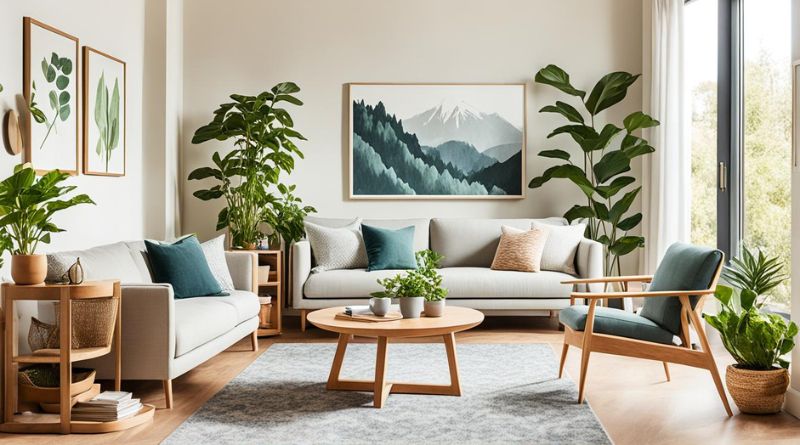Incorporating sustainable practices into your interior design not only benefits the environment but also creates a healthier and more mindful living space. Here are ten effective ways to integrate sustainability into your home design:
Table of Contents
1. Choose Eco-Friendly Materials
Opt for materials that are sustainably sourced or have a lower environmental impact. Bamboo flooring, reclaimed wood, and recycled glass tiles are excellent choices. These materials reduce the demand for new resources and often have a smaller carbon footprint.
2. Invest in Energy-Efficient Lighting
Switch to LED or CFL bulbs, which use significantly less energy than traditional incandescent bulbs and have a longer lifespan. Installing dimmer switches and smart lighting systems can further enhance energy efficiency and allow you to control lighting based on needs.
3. Use Low-VOC Paints and Finishes
Low-VOC (volatile organic compounds) paints and finishes release fewer harmful chemicals into the air, improving indoor air quality. Look for paints with low or no VOCs to ensure a healthier environment in your home.
4. Incorporate Recycled and Upcycled Furniture
Select furniture made from recycled or upcycled materials to reduce waste. Vintage or second-hand pieces not only add unique character to your space but also minimize the environmental impact associated with producing new items.
5. Opt for Sustainable Fabrics
Choose textiles made from organic or sustainable materials such as organic cotton, hemp, or recycled polyester. These fabrics are produced with fewer chemicals and have a lower environmental footprint compared to conventional fabrics.
6. Install Water-Saving Fixtures
Upgrade to water-saving fixtures like low-flow faucets, showerheads, and dual-flush toilets. These fixtures reduce water consumption without sacrificing performance, contributing to a more sustainable home.
7. Incorporate Indoor Plants
Indoor plants enhance air quality and bring a touch of nature into your home. Choose plants that are known for their air-purifying qualities, such as snake plants, pothos, and peace lilies. Ensure you use organic soil and natural fertilizers to support their growth.
8. Opt for Energy-Efficient Appliances
Invest in appliances with high energy-efficiency ratings, such as those with the ENERGY STAR label. Energy-efficient appliances consume less power, reducing your utility bills and overall environmental impact.
9. Use Sustainable Flooring Options
Consider flooring materials like cork, bamboo, or reclaimed wood, which are sustainable and have a lower environmental impact compared to traditional options. These materials are often renewable and can be a stylish addition to your home.
10. Embrace Minimalist Design
Adopting a minimalist approach helps to reduce the amount of stuff you accumulate, which in turn reduces waste. Focus on quality over quantity, and choose timeless, durable pieces that will stand the test of time.
FAQs
Q: What are some eco-friendly materials for home design?
A: Eco-friendly materials include bamboo, reclaimed wood, recycled glass tiles, and low-VOC paints. These materials are sustainably sourced or have a lower environmental impact.
Q: How can I improve energy efficiency in my home?
A: Improve energy efficiency by using LED or CFL lighting, installing energy-efficient appliances, and incorporating smart lighting systems. Additionally, using natural light effectively can also help reduce energy consumption.
Q: What are low-VOC paints and why are they important?
A: Low-VOC paints contain fewer volatile organic compounds, which reduces the release of harmful chemicals into the air. They improve indoor air quality and are a healthier choice for your home environment.
Q: How can I incorporate sustainable practices into my furniture choices?
A: Opt for furniture made from recycled or upcycled materials, or choose vintage and second-hand pieces. This reduces waste and minimizes the environmental impact of producing new furniture.
Q: What are some water-saving fixtures I can install?
A: Water-saving fixtures include low-flow faucets, showerheads, and dual-flush toilets. These fixtures help reduce water consumption while maintaining functionality.
By integrating these sustainable practices into your interior design, you can create a more environmentally friendly and health-conscious living space, all while adding a touch of style and sophistication.
